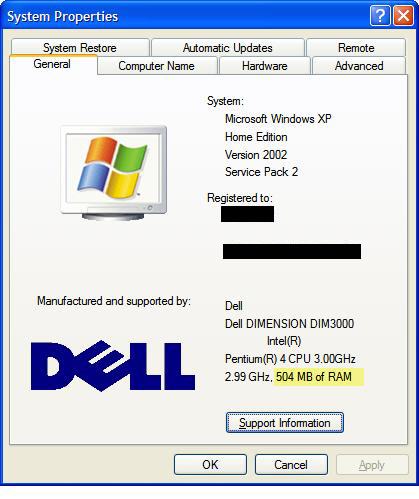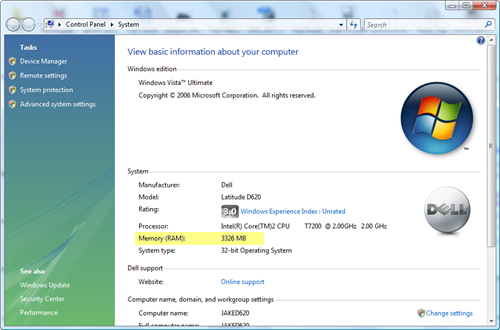How much RAM memory does my PC have?
"I read somewhere that my computer will be faster if it has more RAM. How can I find out how much RAM my Windows computer already has to see if I need more?"
Adding more memory will speed up some aspects of your computer, but there's no guarantee that more RAM will translate to a blazing fast PC. Other factors, like how many open applications you continually run, whether you're doing memory intensive projects like video and photo editing, how fragmented your drive is, and how long ago your last reboot was contribute to overall performance. Having said that, most computers that ship from Dell, HP, Gateway and the other OEM PC makers are ship with far less RAM than I personally consider ideal.
To find out how much RAM your computer currently has, the easiest thing to do is look at your System Properties. You can access Windows System Properties in one of several ways. From the keyboard, press the Windows key and Pause/Break key at the same time - this pulls up System Properties. Another way to get to this info is to click Start, right click My Computer and choose Properties. A third way to get there is to click Start > Control Panel and then click on the System icon in the Control Panel.
You should see a screen like this:

Toward the bottom the screen lists how much memory. The number may vary slightly from what the actual memory sticks are rated, for instance in the example above, the memory as purchased is 512MB, while the system only recognizes it as 504MB.
If you have Windows Vista, the steps to finding how much RAM you have are the same, but the screen looks like this:

To find out how much RAM will help your system, consult the Crucial Memory Calculator. Let the tool analyze your system and then it shows you what you need to add more RAM and several other key components.
You can also see a video of this tip: